ALBERT KOTIN

THE NEW YORK SCHOOL –AT THE HEART OF IT ALL






After World War II, the painter Albert Kotin (1907–1980) immersed himself in the intense and exciting artistic environment of Greenwich Village. Working from his studio on West 10th Street, he became an active member of the first-generation of the New York School of Abstract Expressionism. This uniquely American art movement radiated from Kotin’s neighborhood – then a handful of run-down New York City blocks suitable for studios and homes for struggling artists. Abstract Expressionism has the distinction of being the first American school of art to gain international acclaim and significance – so much so that ultimately, New York would supplant Paris, transforming New York into the premier city of the art world.
During the late 1940s and early 1950s, Kotin’s artistic milieu was known as the “Downtown Group” – artists who generally resided in the area bounded by 8th and 12th street between First and Sixth Avenues. This was a richly engaged and vital community – a self-nurturing art world unto itself.
Always seeking his own artistic vision, Kotin’s spirited and remarkably diverse array of paintings are reflective of his role in this legendary vanguard that involved friends and associates such as Jackson Pollock, Willem de Kooning, and Franz Kline, among other luminaries of the American avant-garde.
Kotin was born in 1907 in Minsk, Russia, and emigrated to New York, with his parents one year later. He and his family lived an impoverished existence as immigrants on New York’s Lower East Side. Because of his artistic promise, Kotin was supported in his endeavors to take classes at the Art Students League and the National Academy of Design, two of the finest art schools in the United States. In 1929, he went to Paris for two years to study at three major Parisian art academies: Académie Julian, La Grande Chaumière, and the Atelier de Fresque.
Returning to the U.S. during the Depression, the WPA and other Federal Arts programs selected Kotin to produce large murals for federally owned buildings in three different American cities. Soon, however, World War II intervened and Kotin joined the Army where he served making maps as a governmental cartographer.
At the end of World War II, the G.I. Bill enabled Kotin to study, from 1947–1951, with the illustrious European-born art teacher Hans Hoffman – arguably the most influential instructor of Abstract Expressionist painters. The Hans Hofmann School of Fine Arts, located at 52 West 8th Street, was near Kotin’s studio in Greenwich Village and just down the street from the revolutionary Whitney Museum of American Art. During the summer, Hofmann and his students went to Provincetown, Massachusetts, to continue their studies. Provincetown had already become a small colony for innovative artists and provided an ideal setting for Hofmann’s painting students to be at a remove from the urban environment of New York during the summer months to focus solely on their studio work. During this time, Kotin’s fellow students included Helen Frankenthaler, Lee Krasner, Larry Rivers, Robert De Niro Sr., Wolf Kahn, and Jane Freilicher, among others. Kotin’s time with Hofmann was foundational to his development as an artist and, in particular, as the extraordinary abstractionist he was to become.
Hofmann was an unusual instructor and adopted a liberal approach to media and stylistic choice; whether representational or completely abstract, he wanted each of his students to perfect their individual craft by actively understanding the capabilities of the medium. As a teacher, he never expressed explicit preference for either representation or abstraction. Famously, Hofmann was renowned for prompting his students to use values and color relationships to create a dynamic palette without resorting to traditional perspective painting – what he called “push and pull” – to establish the sense of energetic action in a painting and surface variation without violating the intrinsic flatness of the canvas. While the influences of Hofmann’s approach to an aesthetic vision can be seen throughout this exhibition, one excellent example can be viewed in the fulmination of colorful shapes floating in and out of a pervasive field of green in Untitled (1947), which exemplifies this method in Kotin’s work. It is important to grasp that Hofmann’s students were never told what to paint; instead, he taught Essay continues on page 6
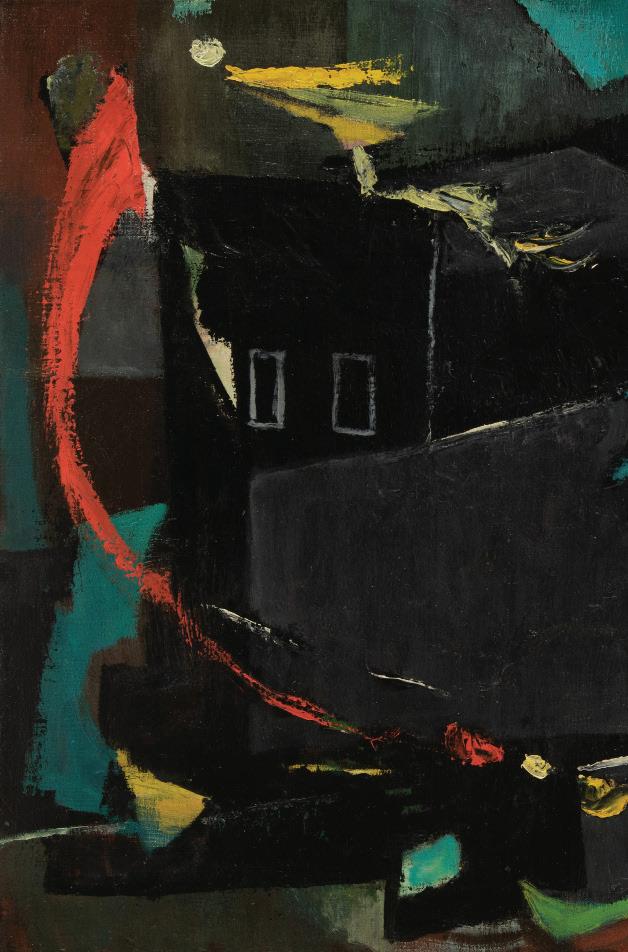
Halloween Night, c. 1947 Oil on canvas, 20 x 28 inches

students to comprehend what dynamics and emotions they could generate through effective use of their media, and it is evident that Kotin learned these lessons especially well.
In the late 1940s and into the 1950s, a signature pall was felt across the nation. The War’s devastation and horrors mingled with residual impacts of the Depression. Painters, sculptors, musicians, poets, writers, and philosophers converged downtown for mutual support at inexpensive venues such as the Waldorf Cafeteria, the Cedar Tavern, and later, the Eighth Street Club – commonly known as “The Club.” Nightly, groups gathered and participated in lively discussions, arguments, and “high and low polemics” on art. Kotin was actively part of this scene and savored the richness of the distinct opinions about art and art philosophies that would eventually manifest in his work.
Philip Pavia, an artist, writer, and a founder of The Club, chronicled many of these activities and noted that Kotin was “a regular at the Waldorf” and then a “voting member of the Club,” listing Kotin as an “abstract painter” suggesting the embattled division among artists trying to identify as “abstractionist” or “expressionist.” These tendencies and what they meant were fiercely debated at The Club but, in the end, were merged and resolved for many artists, including Kotin, by using the conjoined name, “Abstract Expressionism” or what is now often referred to as “AbEx.”
According to Pavia, the Waldorf Cafeteria became “the eye of the storm” for a new art, for the power and freedom of abstraction to supersede the symbols of the European Surrealists who had come to dominate Modern Art in New York in the years leading up to World War II. Artist Willem de Kooning asserted that abstract painting would mean “more personal contact with the message” and bring the “artist closer to the direct experience” of the making of art. He said, “direct art [would come] come from distorted brush marks.”
At the Club, de Kooning, Franz Kline, Philip Guston, Joan Mitchell, Milton Resnick, Jack Tworkov, Elaine de
Kooning, Perle Fine, Esteban Vicente, and many other pioneering art figures of that period would gather and hotly debate approaches, philosophies, and artistic premises of Abstract Expressionism and the relationship of the new American art to its European Modernist predecessors, such as Surrealism and Dadaism.
Kotin, of course, was engaged in all this and absorbed ideas from this robust conversation in what became the intellectual cauldron of the most provocative movement in American art history. For Kotin, the various theories about what art should be, how it should respond to the social and political realities of the times, and the greater context of art history, fused with his studies with Hofmann. Lessons with this great master would prove transformative for him, and Kotin’s work increasingly incorporated abstract compositions and explorations of color dynamism as his career progressed.
By the early 1950s, Kotin briefly integrated gestural Pollock-like “drip-pours” into his works along with Hofmann-like planar forms. An elegant example of this – and the only one in this exhibition – is a rare oil and enamel on board, Untitled (1950). Subsequently, Kotin moved from thin washes and “drip-pours” to utilizing applied impasto paint that covered the entire canvas creating an all-over tactile surface. In these exquisite impasto works, the hand of the artist begins to be revealed in the heavily loaded brushwork, exemplified in a series of distinctive paintings completed by Kotin from 1953 through 1959.
Also included in this exhibition are Downbeat (1953), Calliope I (1953), Untitled, (1957), Untitled (1957), Tidal (1958), and Hunters Eve (1959). Each are iconic examples of an artist’s inner emotive force conveyed with utter intensity in his work. When these paintings were conceived, the world was focusing on space exploration, so Kotin appears to be exploring the emotional aspects of space as well. In his writings, Kotin referred to, “space interwoven with itself, a curtailed infinity moving with a force that creates an element of time and emotion, slapping against its enclosing surface with the sound of waves breaking out but returning
Essay continues on page 10
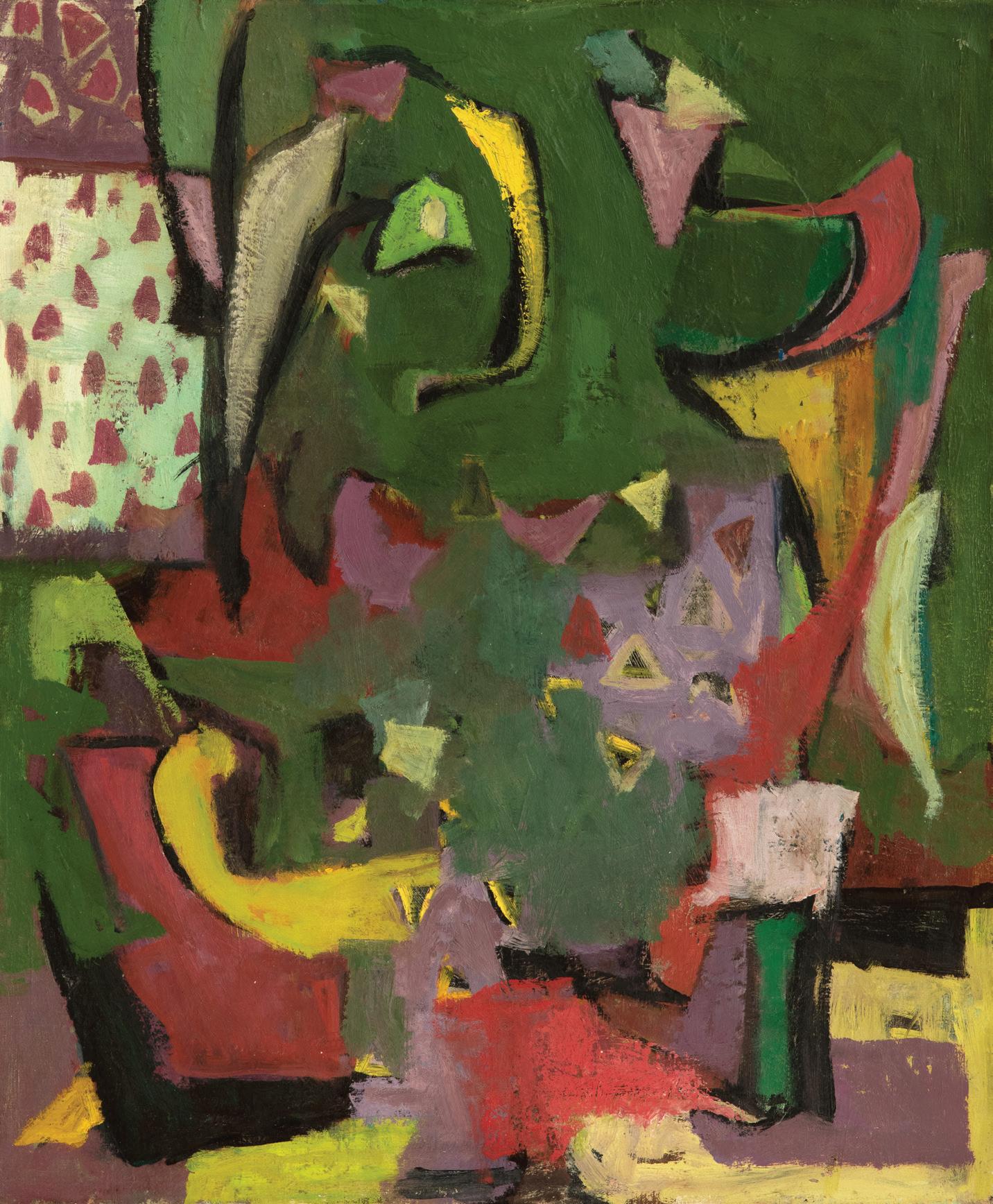
with a rush to embroil itself once more within the canvas…” Again, Kotin’s recognition of the ecstatic effects of the interplay of color comes to the fore. These works are energized and vibrant.
In 1951, Kotin was one of the artists selected by his fellow artists to be exhibited in the groundbreaking Ninth Street Show organized by The Club and curated by the esteemed gallerist Leo Castelli. The exhibition, which was quite radical at the time, also included work by Kotin’s friends and colleagues, many of whom are celebrated today. A few exhibitors selected were Jackson Pollock, Helen Frankenthaler, Franz Kline, Willem de Kooning, Elaine de Kooning, Joan Mitchell, Robert Motherwell, Enrico Donati, and numerous others.
To the surprise of the artists, the show attracted huge crowds, and, notably, the opening was attended by Alfred Barr, the founding director of the Museum of Modern Art and the Museum’s well-known curator, Dorothy Miller. The 9th Street show was deemed a critical breakthrough as it fulfilled its goal of attracting the interest of a skeptical audience, specifically art critics and gallery owners. Soon, Abstract Expressionism garnered praise from curators, critics, and collectors including Alfred Barr, critic Clement Greenberg, and gallerist Peggy Guggenheim. In a very real way, the 9th Street Show artists made Contemporary Art history and created the formal debut of Abstract Expressionism.
The Ninth Street Show was so well received, it was reinvented as an annual invitational exhibition at the Stable Gallery on West 58th Street for the next five years. Each show was juried by a panel comprised of respected artists, and it is a very telling indicator of the caliber of Kotin’s work that his paintings were included in all five of the subsequent Stable Annuals. Over the next decade and a half, he also had solo shows at a number of New York galleries such as the Hacker Gallery, the Grand Central Modern, Tanager Gallery, and Byron Gallery, and he continued to receive commendations in the New York art press.
The paintings in this exhibition vividly illustrate the expansive range of Kotin’s visual language and demonstrate the exceptional contribution he made to the first generation of the New York School of abstract painters. From Hofmann, Kotin learned, “A picture should be made with feeling, not with knowing,” and certainly in the early works from the years when he was a student of his, Kotin explored a range of approaches that allowed him the freedom to express those feelings. These manifested in various uses of forms and degrees of intensities of heat and energy in his abstraction.
Throughout his oeuvre, Kotin sought to imbue his painting with his heart and soul. Over time, like other artists of this period, he brought to his work deeply felt obsessions with concerns of his times and the world. And having been at the heart of what many think of as the triumph of American painting, Kotin left works of immersing fascination, most canonically AbEx, but some beyond easy categorization or historical precedent into realms distinctly personal. Amalgamating the influences of post-war aesthetics and the spiritual avantgard -- and Hofmann’s genius in particular -- Kotin became, as Calder suggested, a bulwark of the sanctity of art. And so, today, his estimable paintings remain.

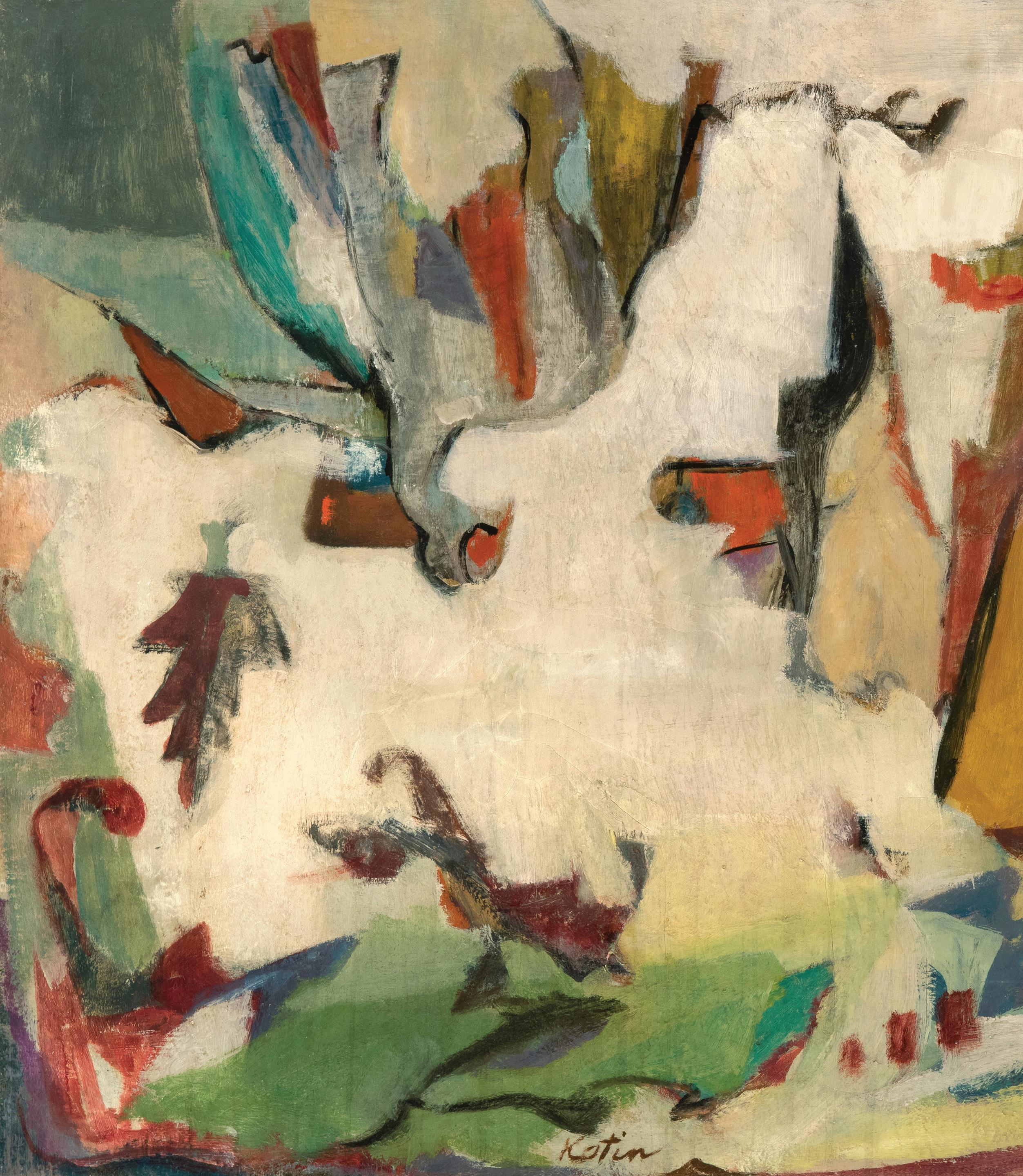
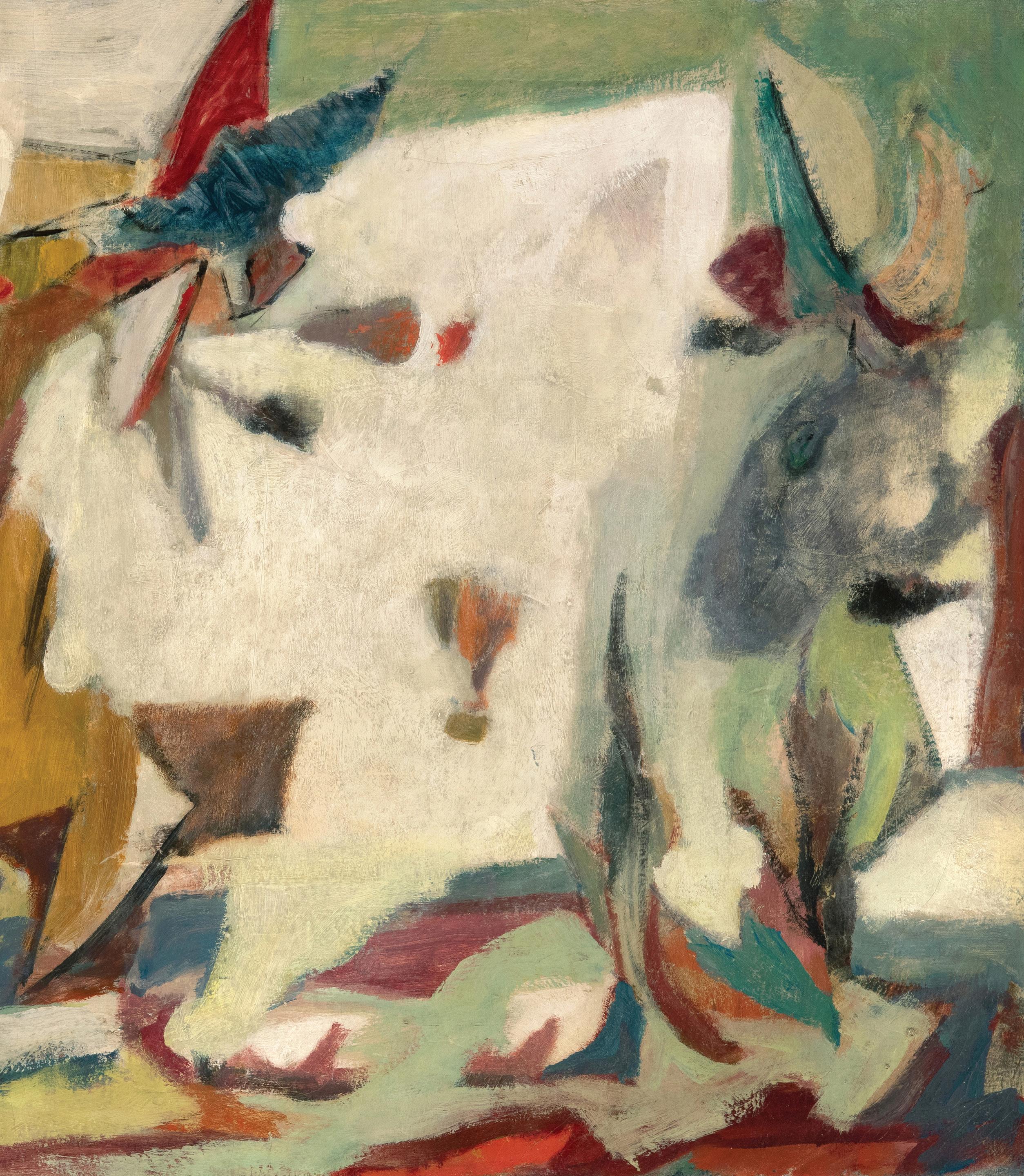
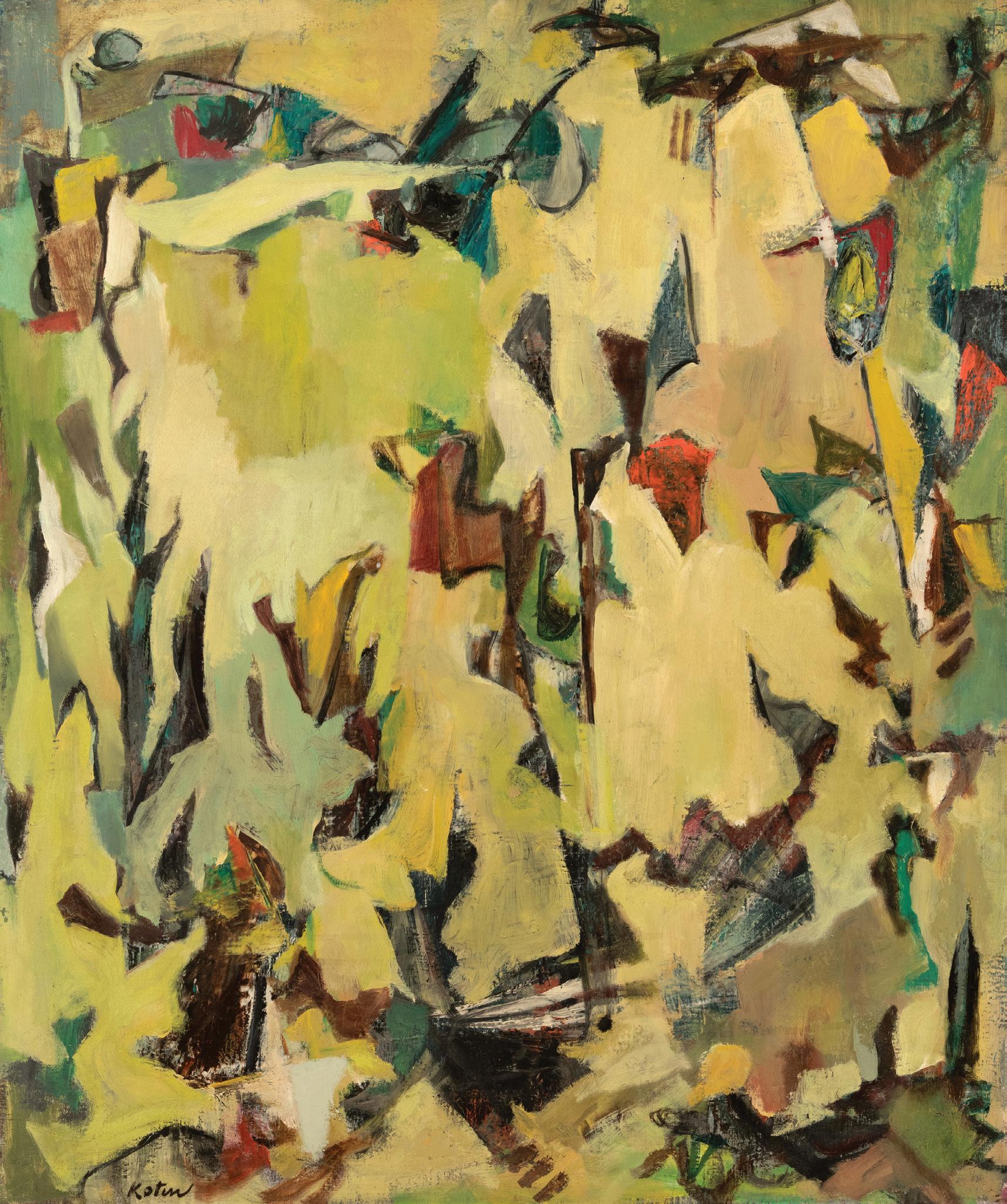
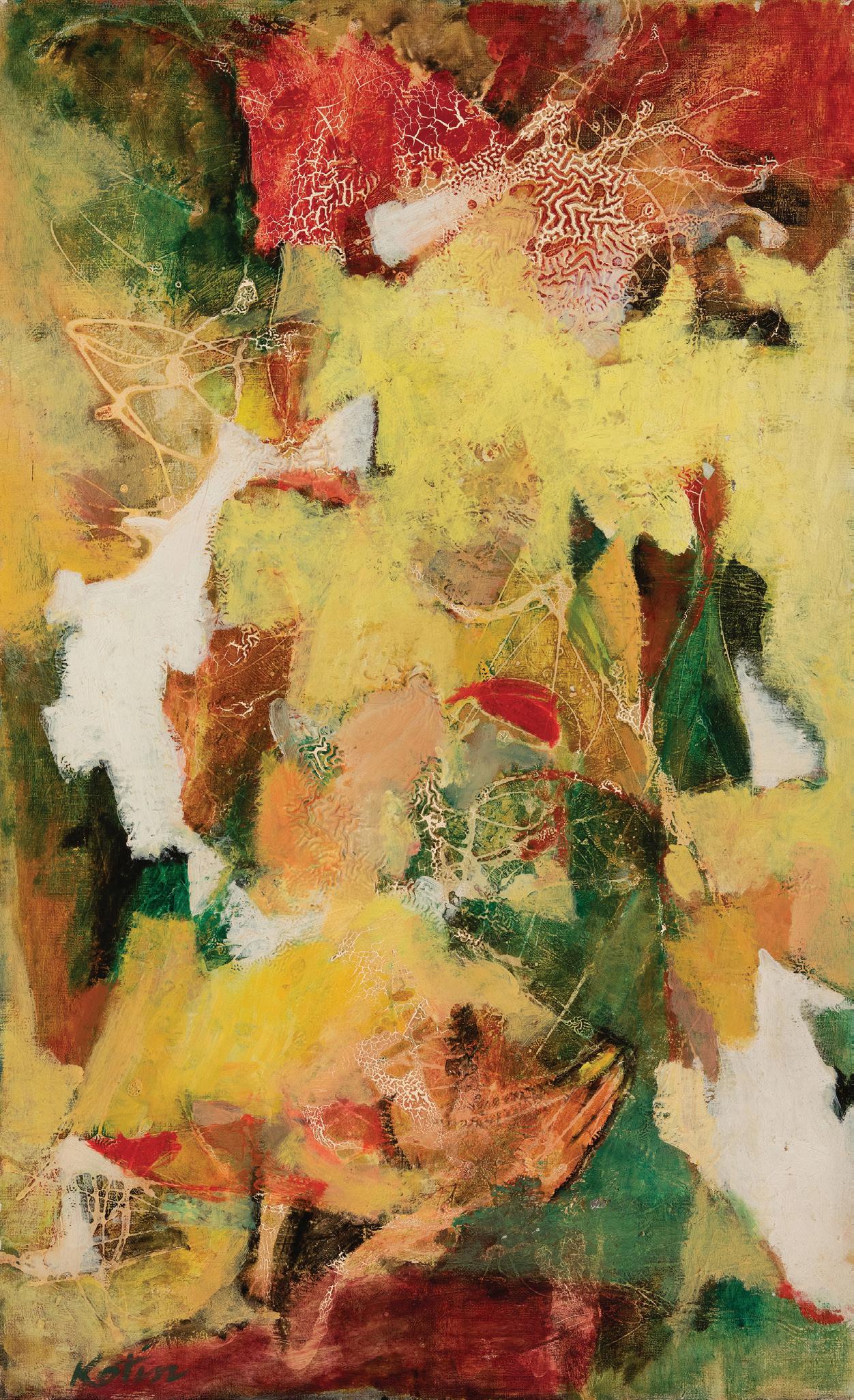
Chinese

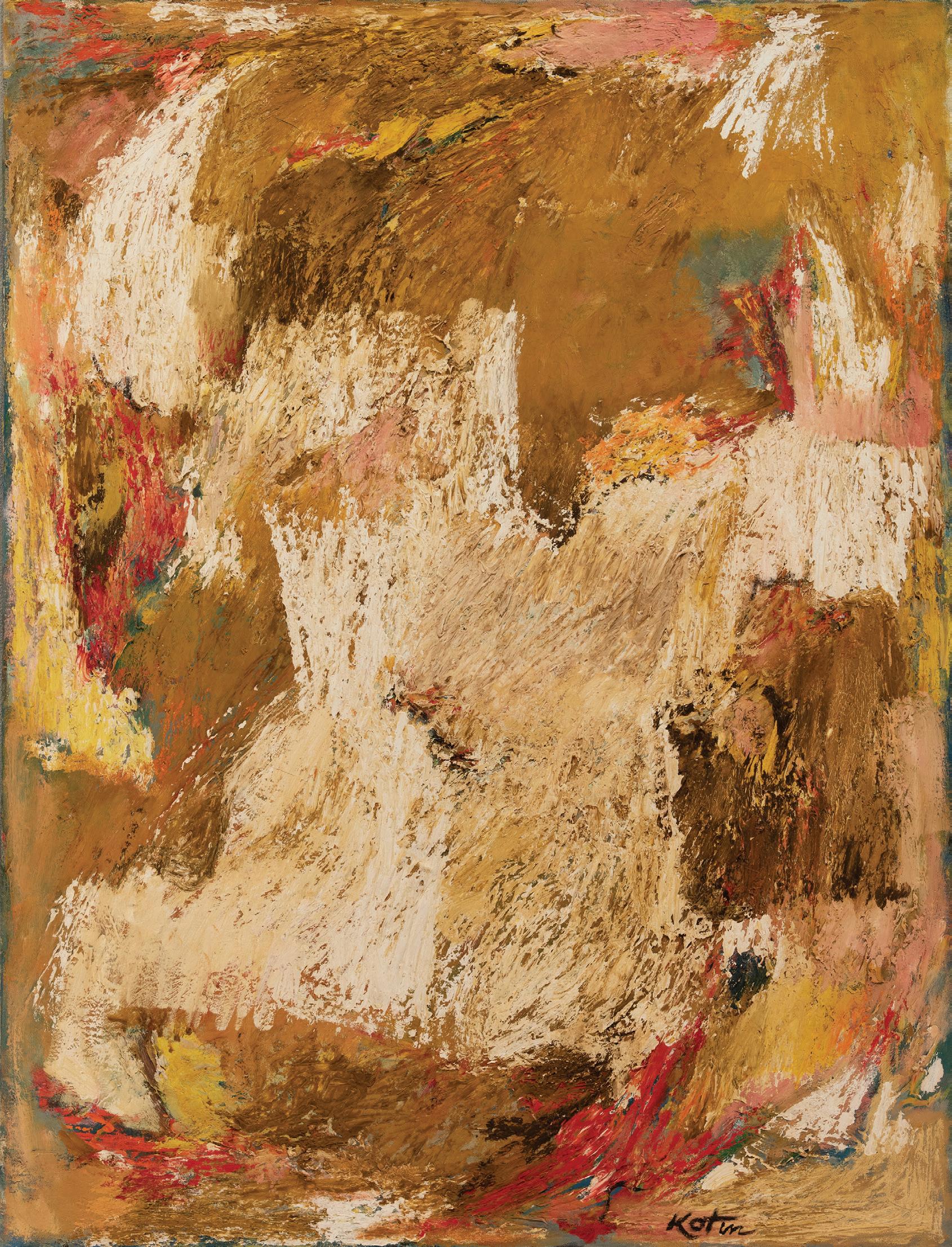
Downbeat, 1953 Oil on canvas, 42 x 32 inches
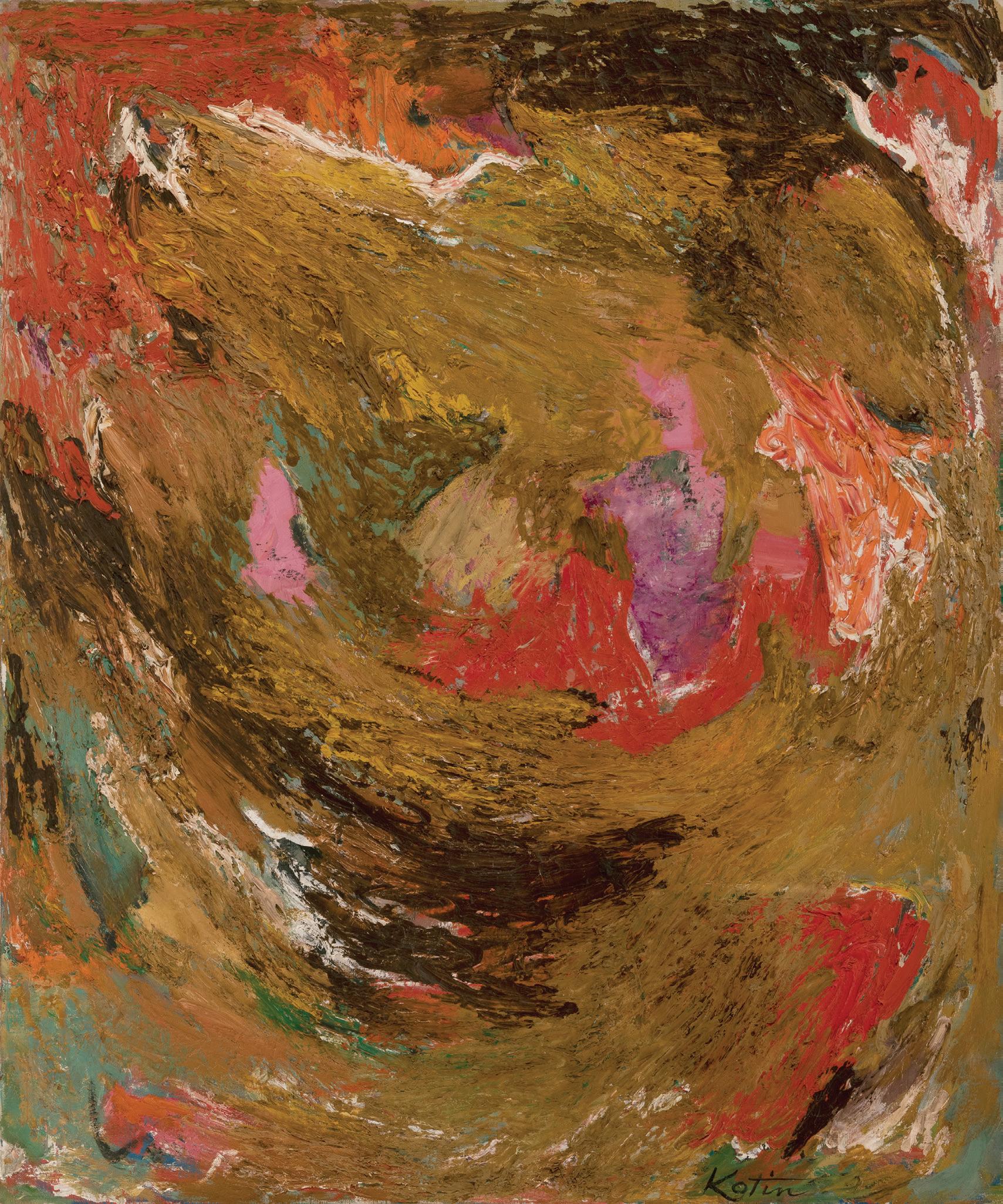
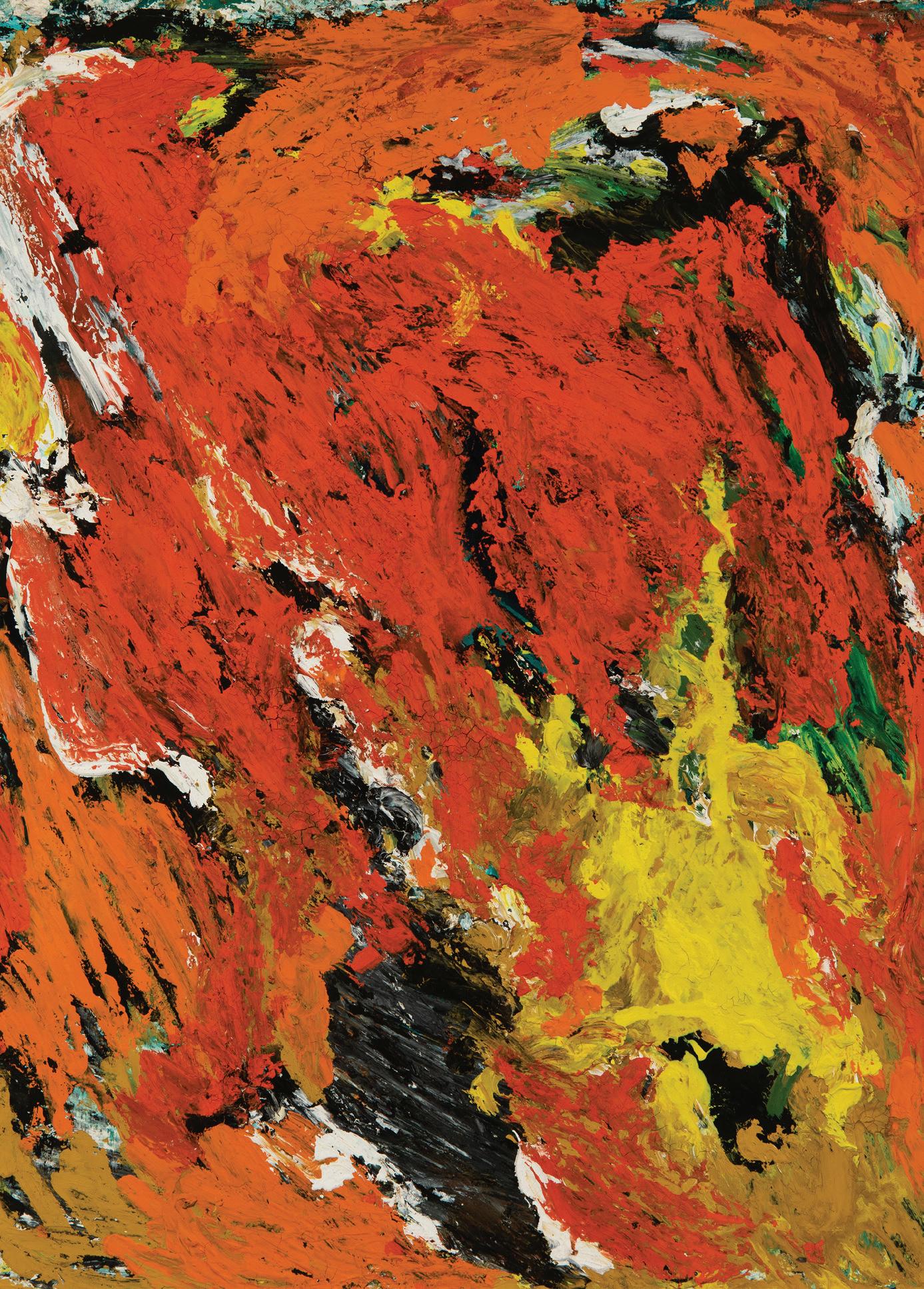


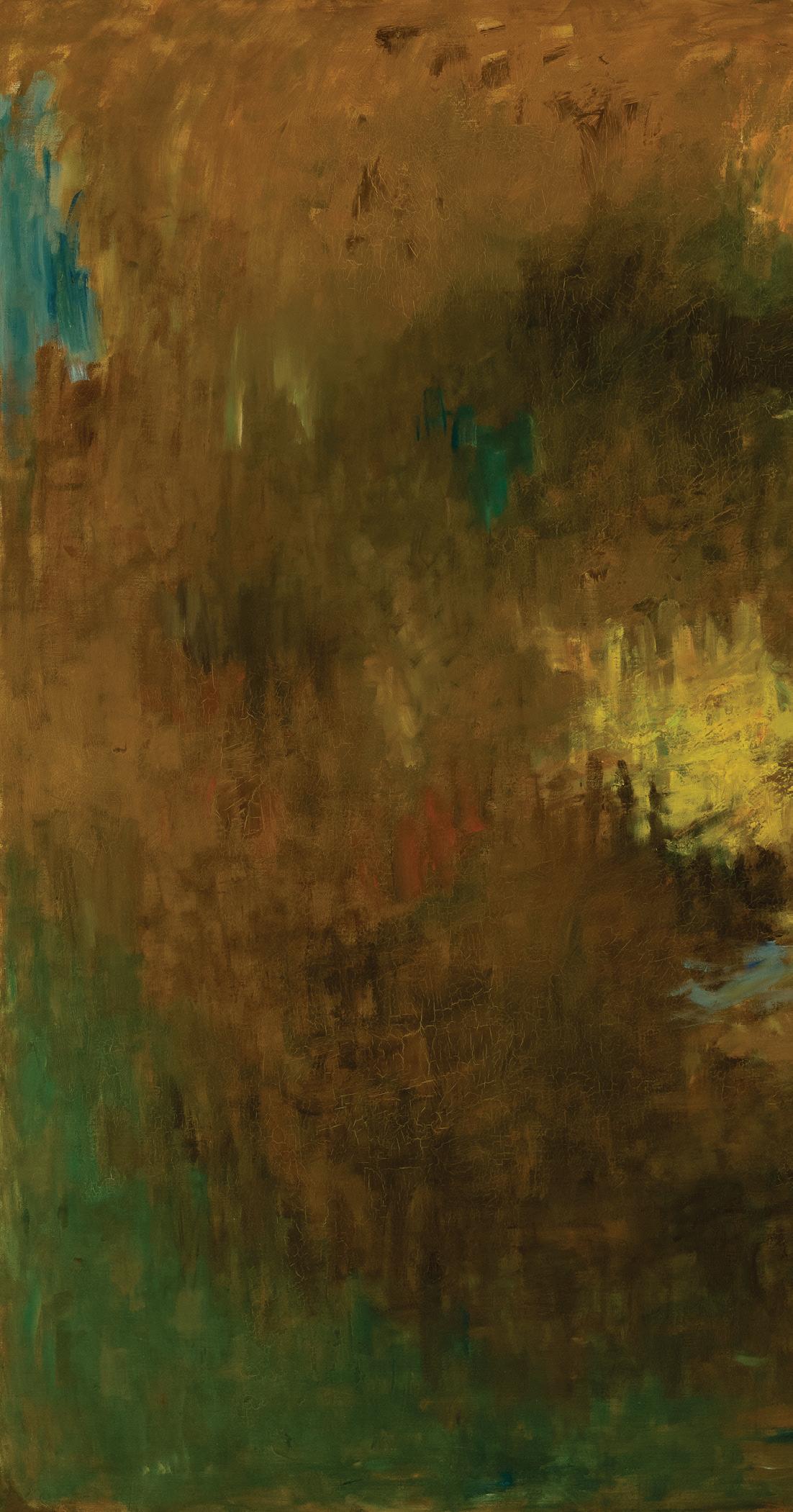
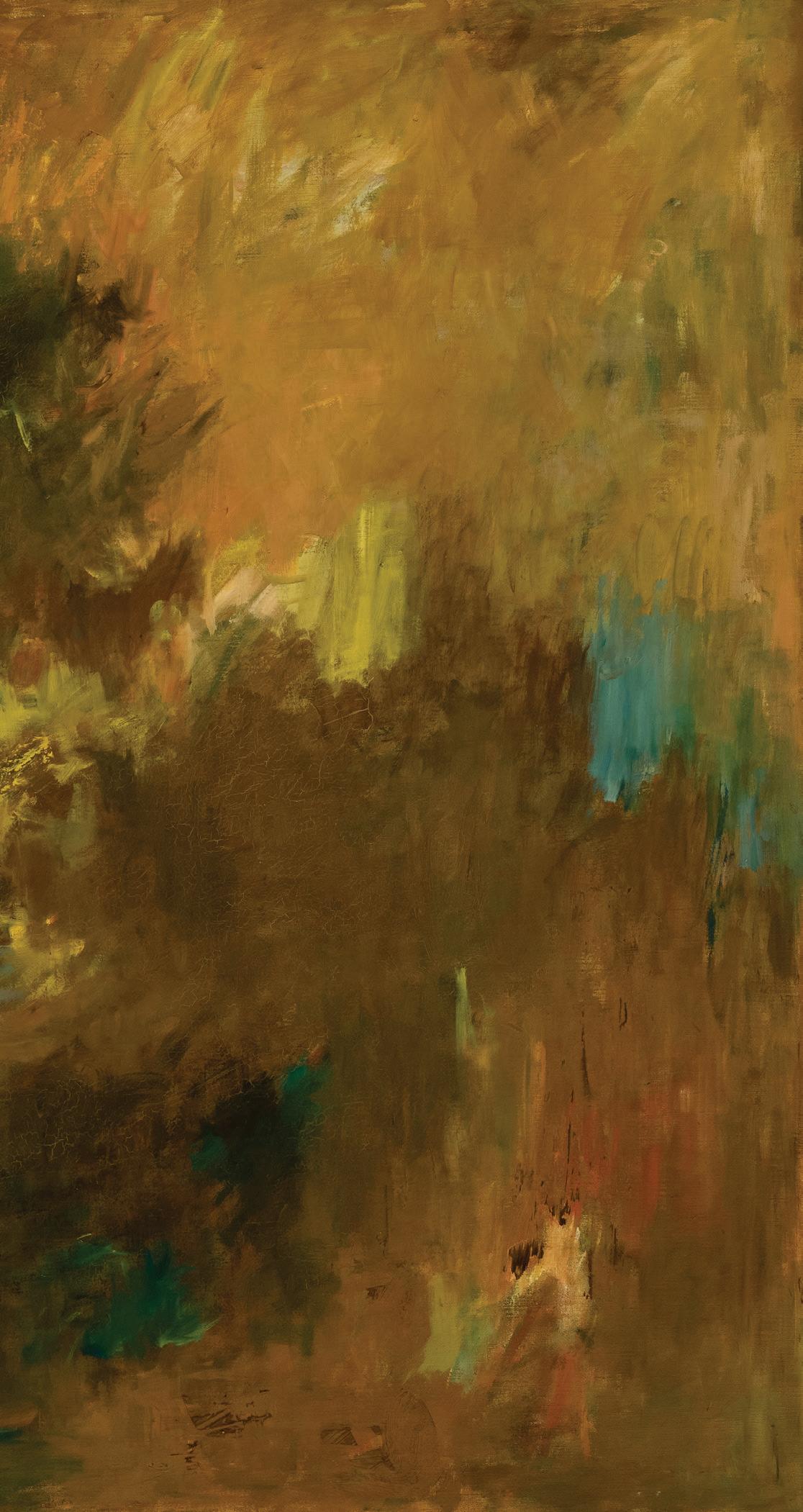
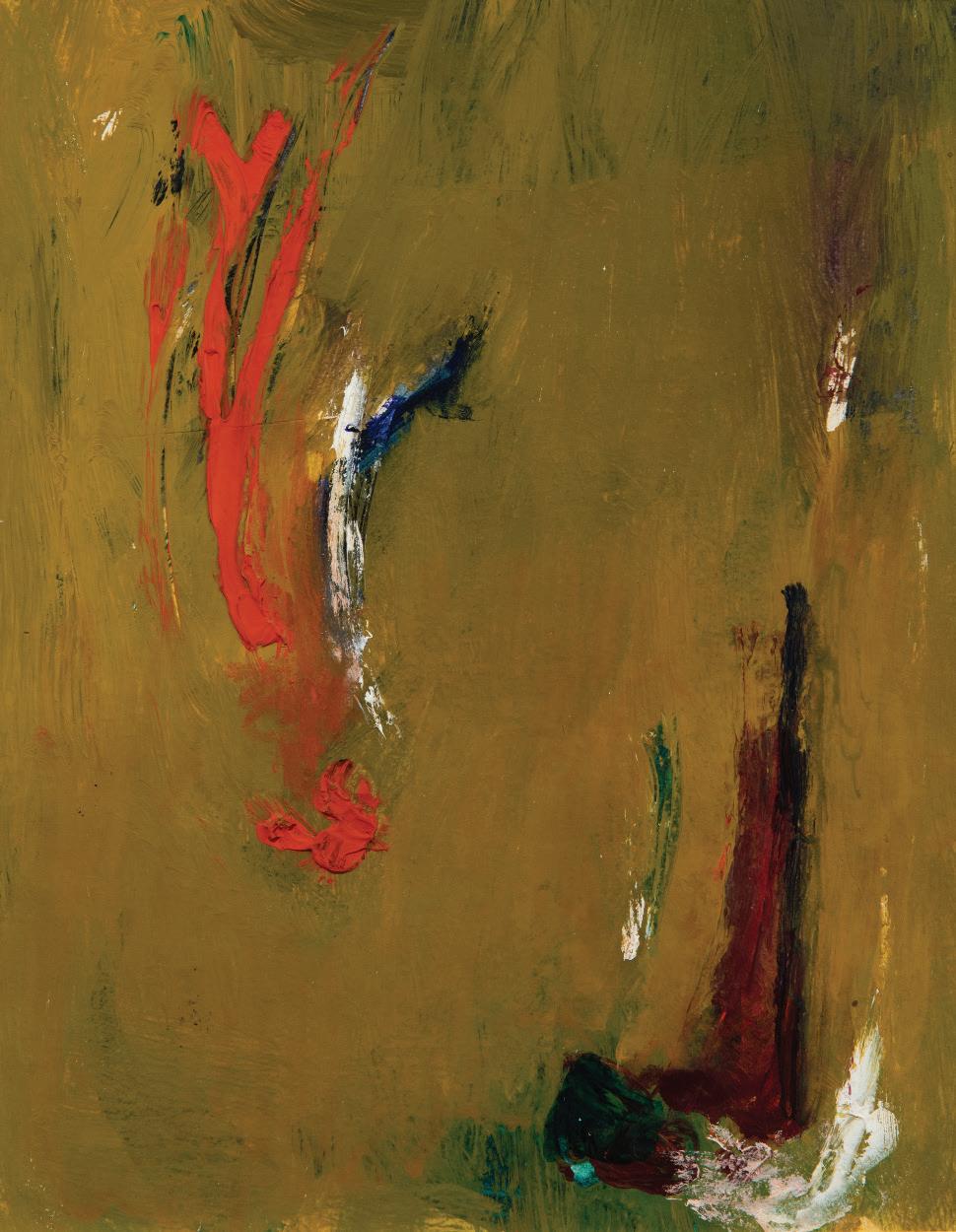
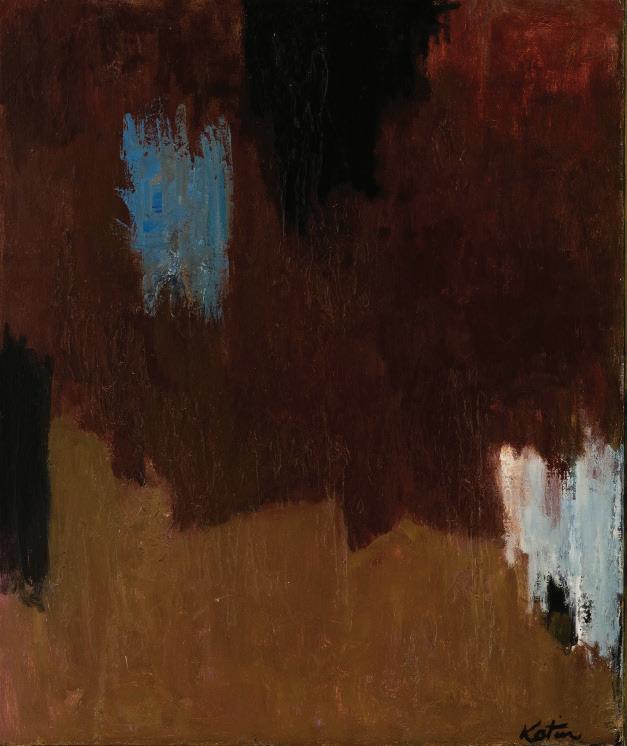
Night Ride, c. 1960
Oil on canvas, 24 x 40 inches
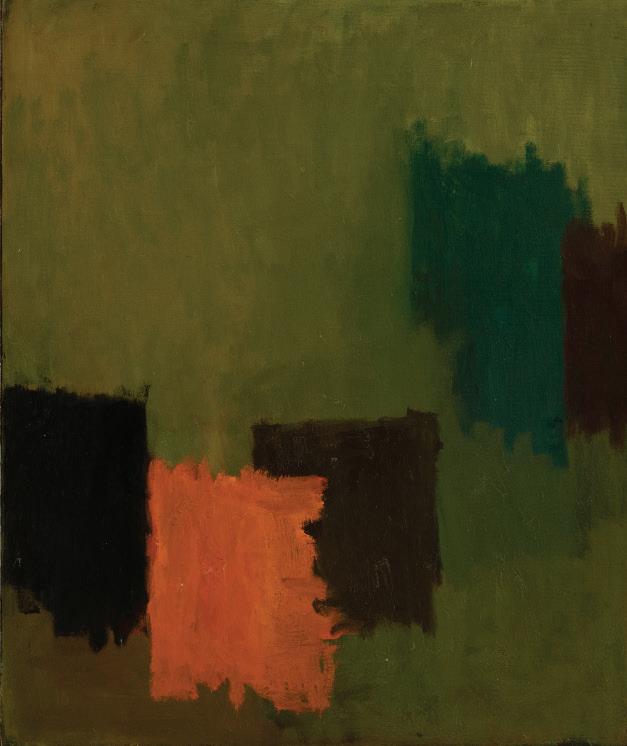


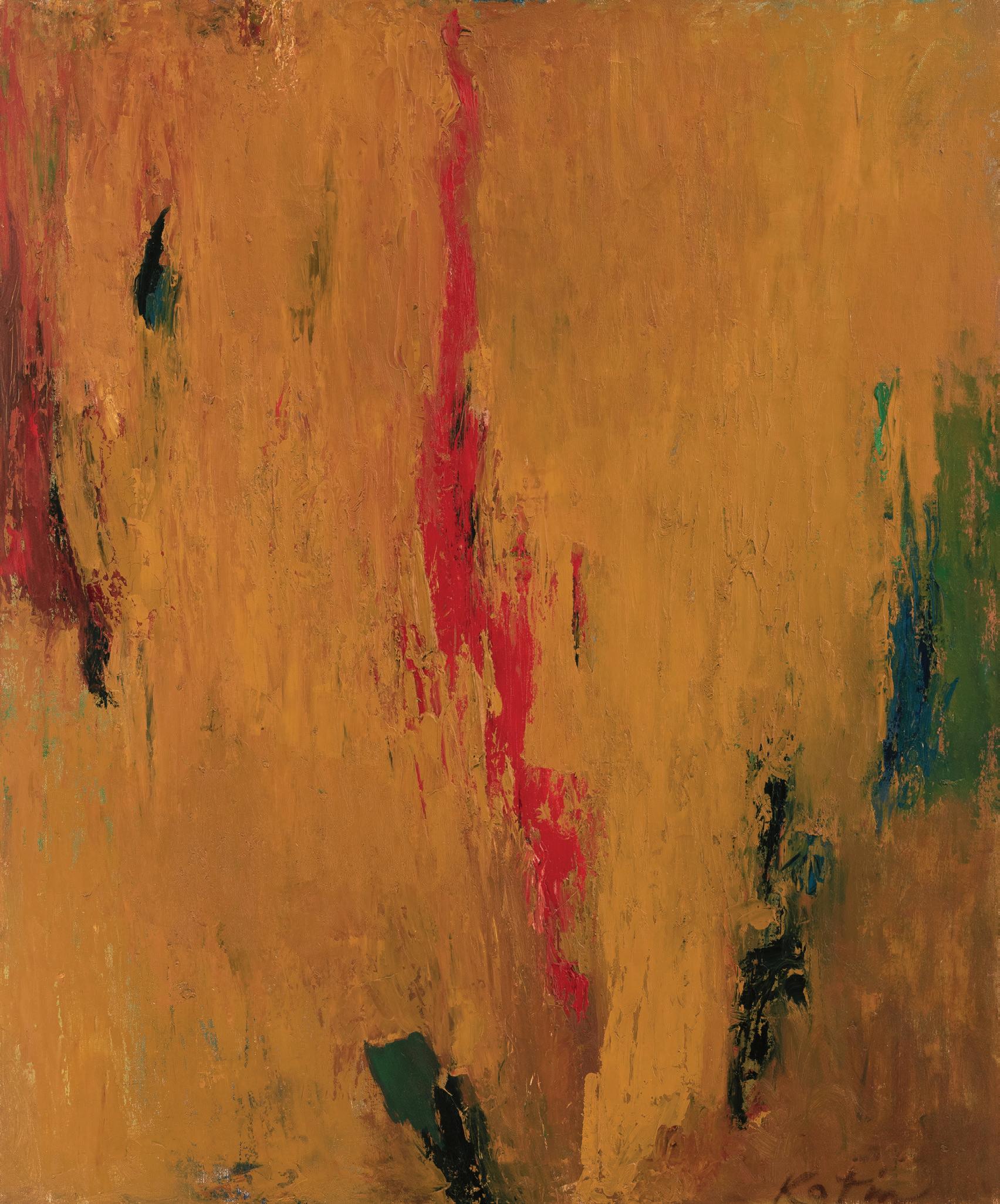
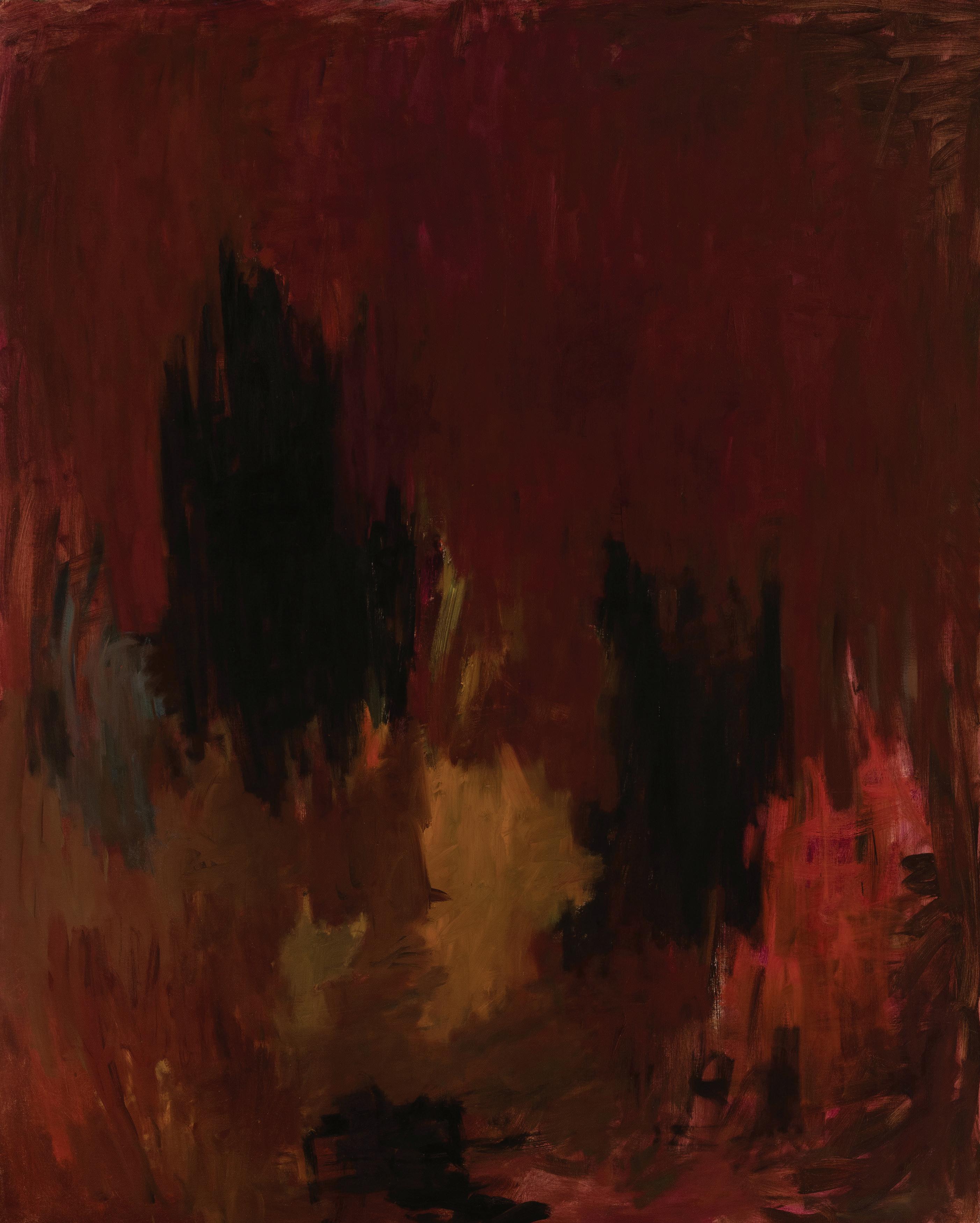



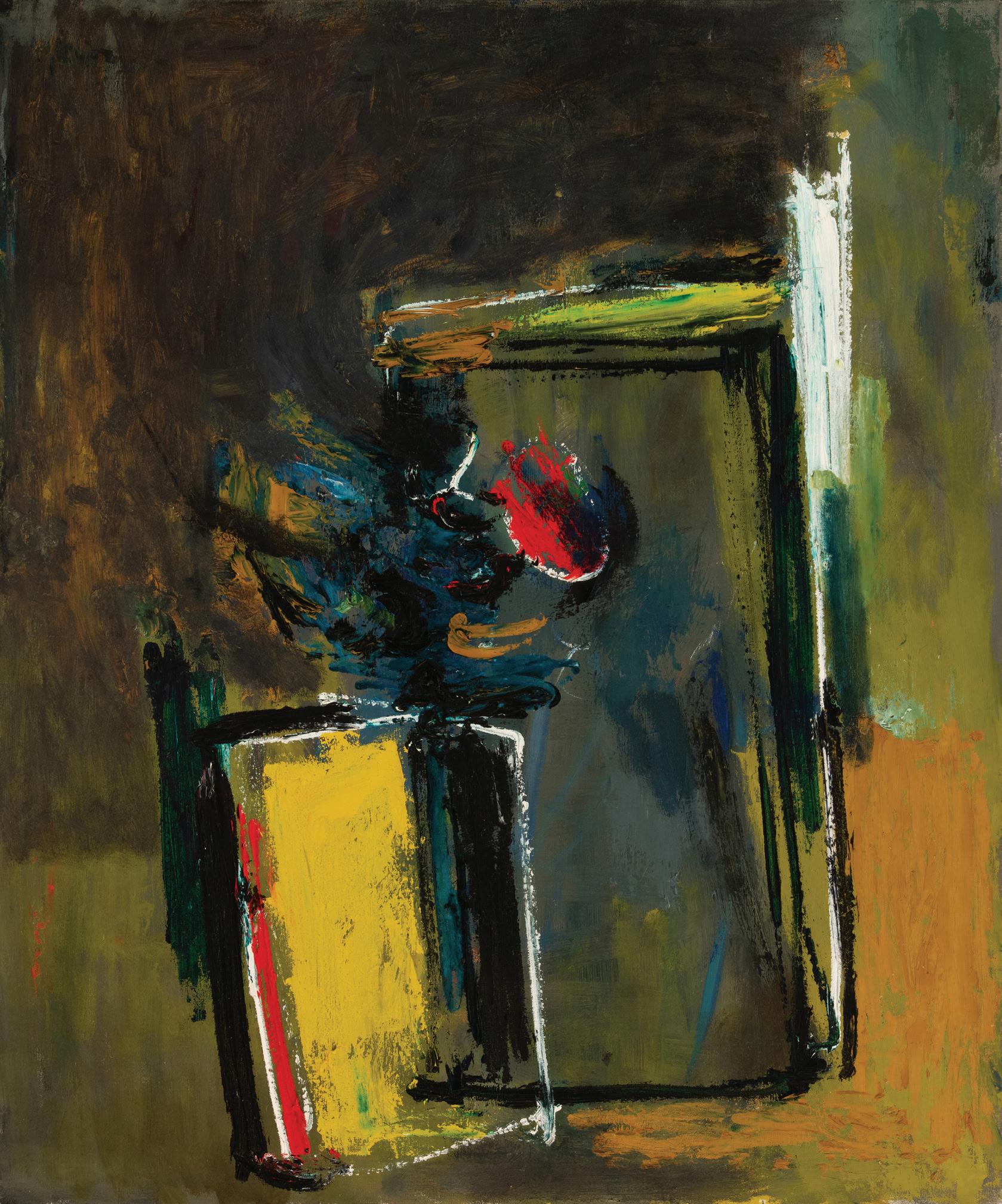
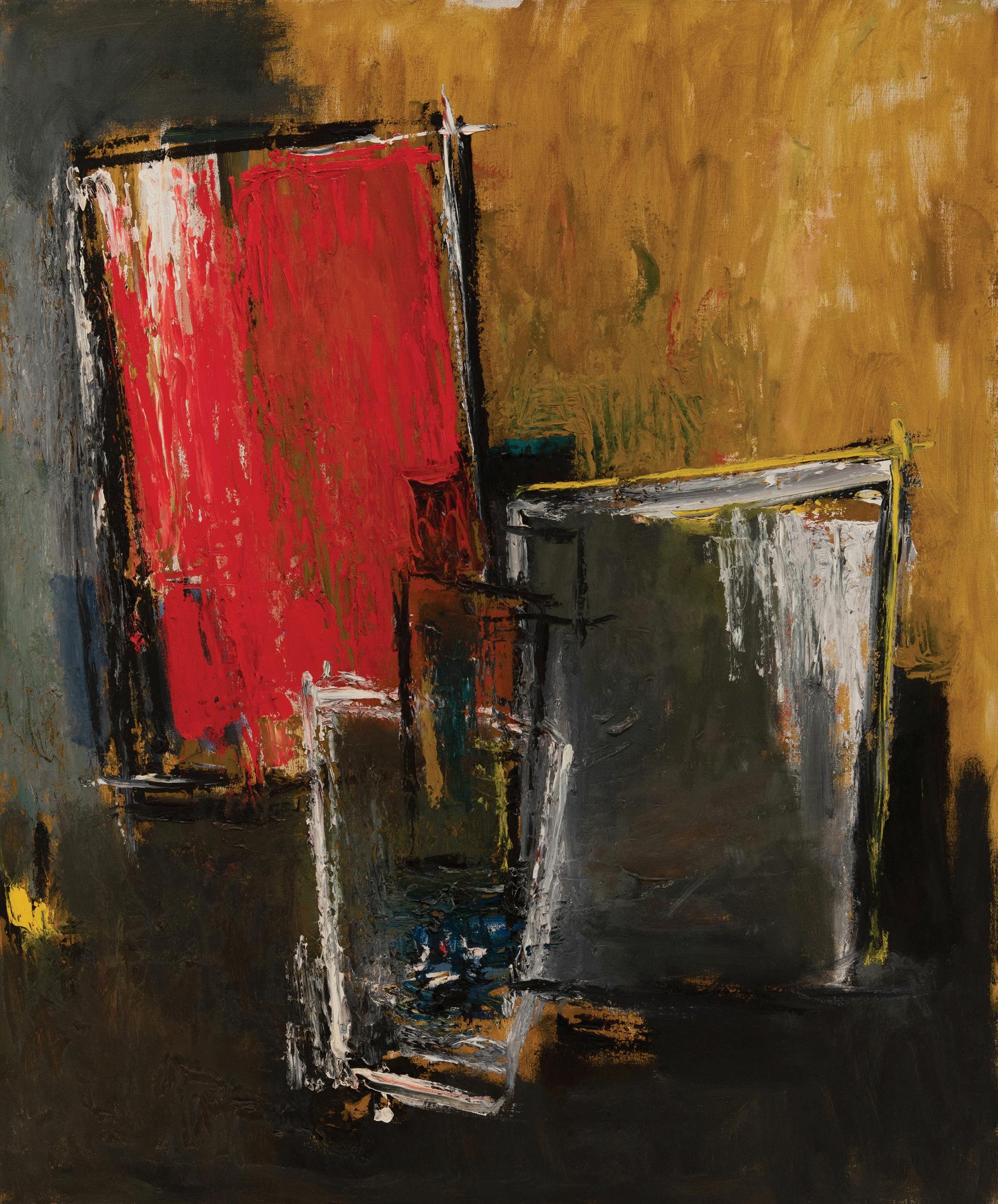

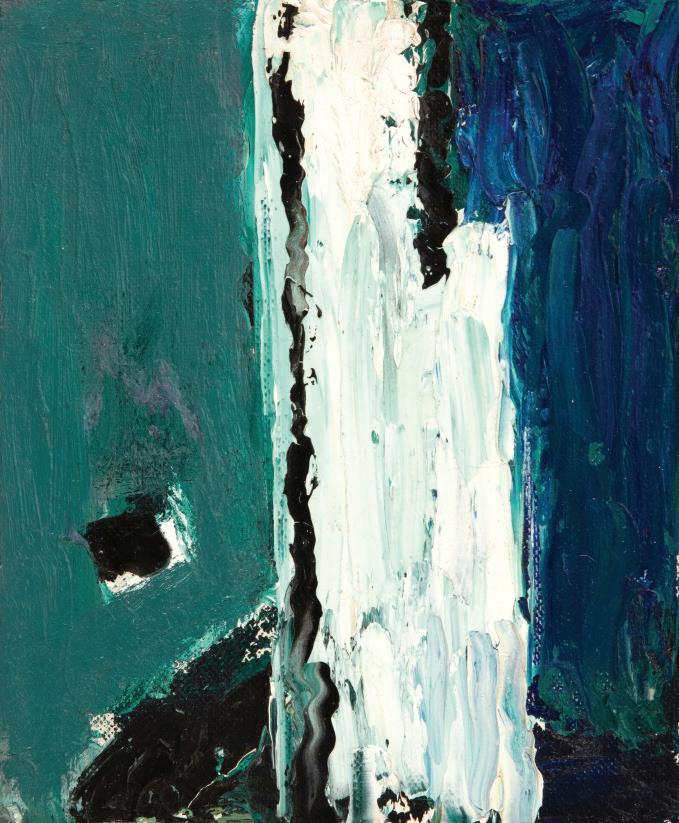
1947-51 The Art Students League of New York and Hans Hofmann, Provincetown, MA and New York
1929-32 Académie Julian, Académie de la Grande Chaumière, Atelier de Fresque and Académie Colarossi, Paris
1924-29 National Academy of Design, New York and Charles Hawthorne’s The Cape Cod School of Art, Provincetown, MA
2023 Albert Kotin: The New York School—At the Heart of It All, LewAllen Galleries, Santa Fe, NM
2022 Albert Kotin: Space Interwoven, Hollis Taggart, New York
2021 Faces of the League: Portraits from the Permanent Collection, The Art Students League of New York
2019 Inspiration & Exploration, Anita Shapolsky Gallery, New York
2004-05 Reuniting an Era, Abstract Expressionists of the 1950s, Rockford Art Museum, IL
2004 New York School Artists 50’s & 60’s, Anita Shapolsky Gallery, New York
1995 The Fifties, Anita Shapolsky Gallery, New York
Early Work: Albert Kotin, Ibram Lassaw & Kyle Morris, Anita Shapolsky Gallery, New York
1988 Albert Kotin Retrospective: Paintings, Drawings, Prints, Artfull Eye Exhibition Gallery, Lambertville, NJ
1987 Abstract Expressionist Tendencies 1955–1965, Princeton Gallery of Fine Art, NJ
1982 Albert Kotin, 1907–1980, Memorial Exhibition, Barron Arts Center, Woodbridge, NJ
1974-75 Los Testigos (The Witnesses), Museo Universitario de Ciencias y Artes, Mexico City, Mexico
1971 25th Anniversary Exhibition: Homage to the Tanager 1952–62, Roko Gallery, New York
1968 Ten Year Retrospective of Albert Kotin’s Work, Long Island University, Brooklyn, NY
1964 Albert Kotin: Oil Paintings, Byron Gallery, New York
1963-65 Hans Hofmann and His Students, circulated by The Museum of Modern Art, New York
1962 Multiples, Graham Gallery, New York Group Exhibition, Long Island University, Brooklyn, NY
The Closing Show: Tanager Gallery 1952–1962, Tanager Gallery
1959 Albert Kotin: Recent Paintings, Tanager Gallery, New York
1958 Albert Kotin: Guest Exhibition of Paintings, Grand Central Moderns, New York
1957 Sixth Annual Exhibition of Paintings and Sculpture, Stable Gallery, New York
1956-57 Painters and Sculptors on 10th Street, Tanager Gallery, New York
1954 Third Annual Exhibition of Paintings and Sculpture, Stable Gallery, New York
1952 One Hundred and Forty Seventh Annual Exhibition of American Painting and Sculpture, Pennsylvania Academy of the Fine Arts, Philadelphia, PA
1956 Fifth Annual Exhibition of Paintings and Sculpture, Stable Gallery, New York
1955 Fourth Annual Exhibition of Paintings and Sculpture, Stable Gallery, New York
1954 Third Annual Exhibition of Paintings and Sculpture, Stable Gallery, New York
1953 Second Annual Exhibition of Paintings and Sculpture, Stable Gallery, New York
1951 Paintings by Albert Kotin, Hacker Gallery, New York
9th Street Art Exhibition of Paintings and Sculpture, Stable Gallery, New York Group Exhibition, Hacker Gallery, New York
1949 Group 8 and 2, The New School for Social Research, New York
1935 Exhibition of Oil Paintings, WPA Federal Art Project, Federal Art Gallery, New York
